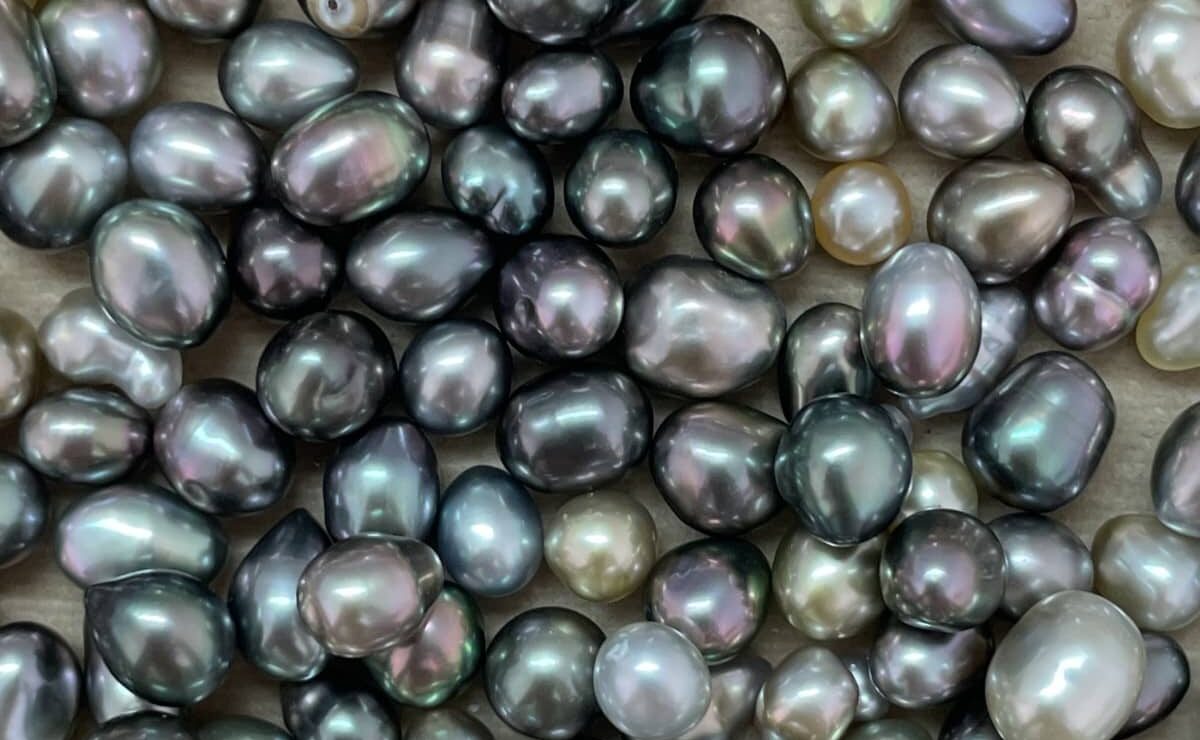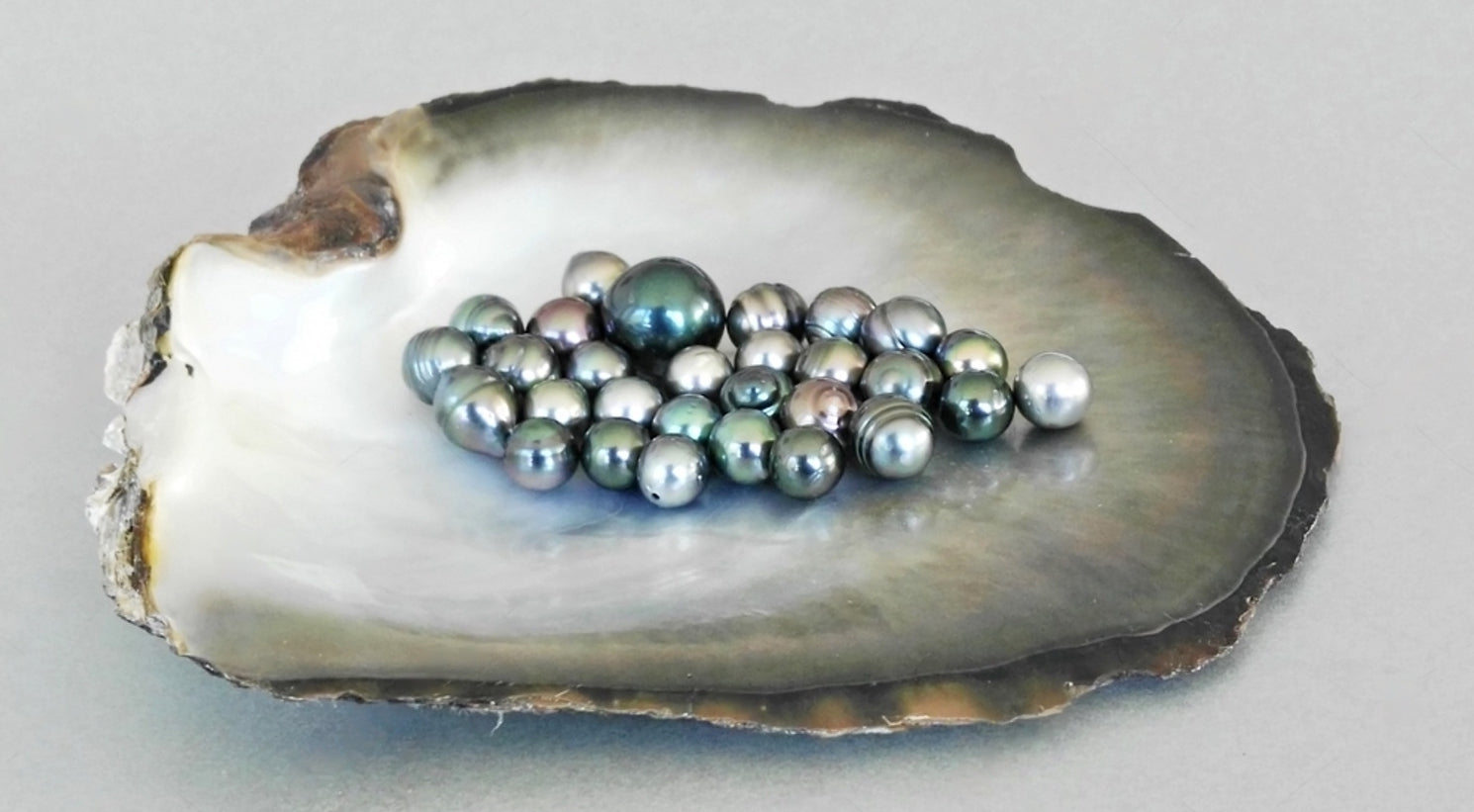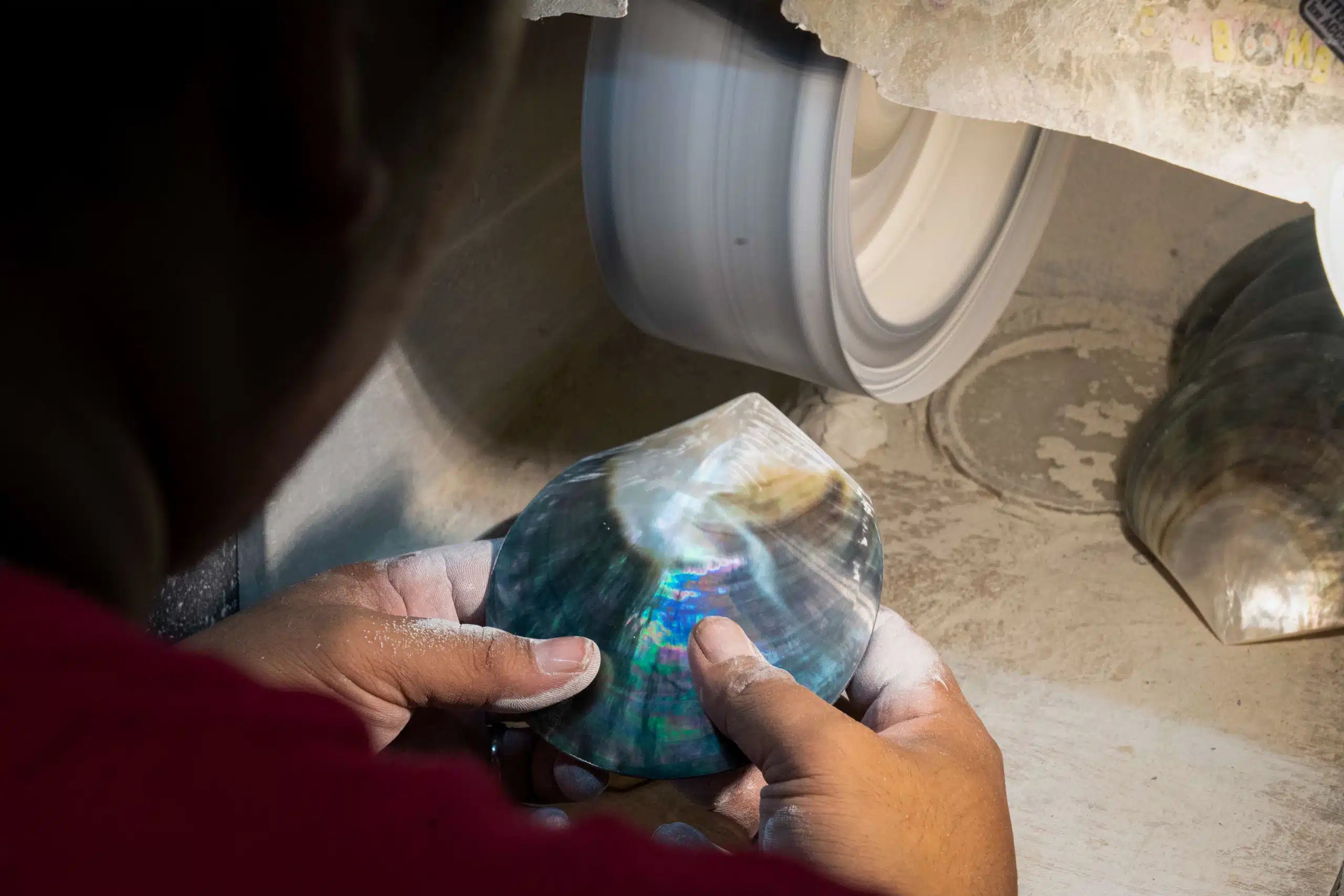But what about keshis ?
Sometimes nature has a mind of its own, and the oyster decides to manage on its own. It rejects the nucleus, which it doesn’t recognize, and keeps only the graft. The graft, whose primary function is to produce nacre, starts working without the round support of the nucleus. It gives life to a delicate, unique, and very special keshi.
A keshi is therefore composed only of nacre, just like the "wild" pearls that the luckiest people used to find in oysters long ago!
The gold rush… for keshi !
The creation of a keshi is unpredictable. Its size, color, and shape are purely the result of chance, and no one can predict when and how it will form. Because its production is uncontrollable, it is much rarer and more difficult to obtain than cultured pearls.
For a long time, keshis were spurned by pearl farmers and buyers, and they were often thrown back into the water! Ironically, today they are highly sought after. Highly desired in the Pacific islands as well as in Asia, keshis are a precious commodity coveted by jewelry designers.
Sensuality that breaks the rules
The golden rule ? There isn't one. Keshi can be worn alone, layered, paired with semi-precious stones, as a set, mixed with other jewelry, at the beach, in the city, at work, on vacation, while relaxing, or at a party... Unique and authentic like us women, each keshi creation has its own character and its own vibes. Finally, wear the original pearls that resemble you.






